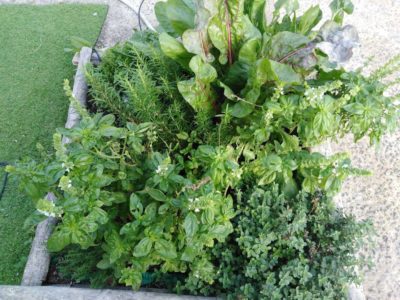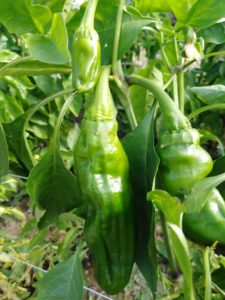The Spanish growing study

We are experienced growers in the UK but there are marked differences in growing in Spain, the best way to learn is by doing, we started work in March 2019 and so this is an overview of what we have learnt so far.
The growing plot is in the Alicante region, the soils in the Alicante area are loamy-sand and mainly dark lime bearing soils on subsoils of sedimentary rock, so they have the ideal texture and grain size for growing vines. They are extremely porous and permeable soils, with good drainage and poor water retention.
This prevents the growth of phytopathogenic fungi. With the organic matter they contain and provided they are well fertilised with iron salts, soils in Alicante are ideal for growing vines.


![]()
 The first patch we planted up on was rotivated and had compost added. It planted with various fruit and veg both seeds and plants, We obtained a decent crop of potatoes but had problems with the other stuff. It then became apparent that there was a drainage issue from a waste pipe from the house and in fact we should not grow there. We also rotivated and added compost to a small triangle bed at the same time in which we grew coriander/melon/native rosemary (courgette/cucumber/lavender) We planted Aloe Vera to edge the growing beds and define the path, this was also done with logs that have thick rope strung between. We then created a new growing bed which again was rotivated and had compost and sheep manure added. It was planted with tomatoes and peppers transplanted from the previous growing site.
The first patch we planted up on was rotivated and had compost added. It planted with various fruit and veg both seeds and plants, We obtained a decent crop of potatoes but had problems with the other stuff. It then became apparent that there was a drainage issue from a waste pipe from the house and in fact we should not grow there. We also rotivated and added compost to a small triangle bed at the same time in which we grew coriander/melon/native rosemary (courgette/cucumber/lavender) We planted Aloe Vera to edge the growing beds and define the path, this was also done with logs that have thick rope strung between. We then created a new growing bed which again was rotivated and had compost and sheep manure added. It was planted with tomatoes and peppers transplanted from the previous growing site. ![]()

There were also some new plants of each added, they have both cropped well and the peppers have been particularly productive and many have been pickled. The coriander grew very well, we have saved some seed and are waiting to see if it will also self seed. The melon struggled with some kind of disease when it grew into the indoor grow space it set many fruits but they did not grow, however we did get one beautiful melon off the plant
 here are a number of succulant plants including this one we are currently trying to identify Contenders on the plant ID are Sally my hansome - if so its just a cool sounding name and has environmental use as a ground/rock cover, insect attractor and soil maker or its the Hottentot fig which produces an edible fruit, its schedule 9 plant in the uk was introduced from Africa. It has an edible fruit which doesnt ripen in the uk but probably will there. It also has medicinal uses, im leaning towards it being the Hottentot fig but I can feel myself at a bias cos i want it to be that one. Both plants look very similar.
here are a number of succulant plants including this one we are currently trying to identify Contenders on the plant ID are Sally my hansome - if so its just a cool sounding name and has environmental use as a ground/rock cover, insect attractor and soil maker or its the Hottentot fig which produces an edible fruit, its schedule 9 plant in the uk was introduced from Africa. It has an edible fruit which doesnt ripen in the uk but probably will there. It also has medicinal uses, im leaning towards it being the Hottentot fig but I can feel myself at a bias cos i want it to be that one. Both plants look very similar.



0 Responses